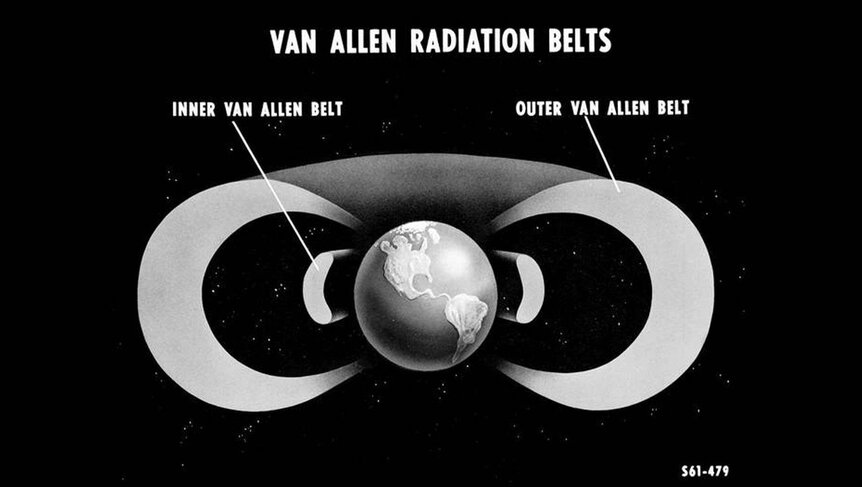Create a free profile to get unlimited access to exclusive videos, sweepstakes, and more!
Humans have created a ginormous space bubble that protects us from killer radiation

We already managed to mess up Earth with everything from landfill overkill to nuclear fallout, so it should be no shock human activity is finally showing up in space. The unexpected thing about our influence beyond the atmosphere is that it is (for once) positive.
Something weird had been pushing the hazardous radiation belts surrounding Earth, otherwise known as the Van Allen Belts, further and further away. For years, scientists were puzzled. Turns out that radio communication signals in what is called the VLF (very low frequency) range had created a bubble protecting us from hazardous radiation. It helps since we’ve already wrecked the ozone layer. Scientists are now wondering whether an entire geological epoch should be named for the effects of human activity, because our species has managed to have an impact on space.
You heard that right. There really are scientists who want to call an end to the Holocene period, which has lasted over 11,700 years, and name this the Anthropocene because so much of our environment on — and now off — Earth has been influenced by the activities of Homo sapiens.
“[Some] anthropogenic impacts on the space environment include chemical release experiments, high-frequency wave heating of the ionosphere and the interaction of VLF waves with the radiation belts,” said T. I. Gombosi, who led a study published in Space Science Reviews.
In an unlikely instance of human-generated emissions doing something other than destroying everything, the anthropogenic bubble surrounding Earth has pushed the Van Allen belts so far out that even the inner one is further than it has ever been. The VLF signals that make up the bubble are even lower than AM/FM radio signals. They are transmitted through communication with satellites, processes that protect satellites from the damaging Van Allen radiation, and long-distance communications among other scientific and engineering uses.
The Van Allen Belts were first discovered by an instrument aboard Explorer 1, the first satellite NASA ever launched into space. Billions upon billions of high-energy solar particles form the outer belt. These particles escape from the Sun only to get trapped by our planet’s magnetic field, and if you know the reason you should wear SPF every day, you’re probably aware of what solar radiation can do, especially when the ozone layer has been depleted by pollutants such as aerosols. The inner belt was formed by interactions between our atmosphere and the types of cosmic rays that next-gen spacesuits are being designed to shield astronauts from.
“Anthropogenic effects on the space environment started in the late 19th century and reached their peak in the 1960s when high-altitude nuclear explosions were carried out by the USA and the Soviet Union,” Gombosi said. “These explosions created artificial radiation belts near Earth that resulted in major damages to several satellites.”
NASA scientists have now proven VLFs can push around some particles in space. So long as they have the right conditions, VLFs are able to alter the properties of the killer radiation surrounding us, which may also be a relief for astronauts on or headed for the ISS. The bubble is making up for at least some of the human destruction that our planet and its surroundings are fraught with. We were a little too nuclear bomb-happy during the last century, especially the later half. The other detrimental effect of monster mushroom clouds, besides cancer and mutations that would never occur otherwise, was artificial radiation belts, as if the Van Allen belts weren’t enough. VLFs might gradually reverse that.
Most of us on terra firma don’t realize VLFs are even there. Nobody knew where else they went, either, or that they even traveled beyond Earth, until scientists discovered the bubble they now believe is impenetrable.
This still doesn't mean you should skip the SPF, but it might restore your faith in humanity, if only for a fraction of a second.















